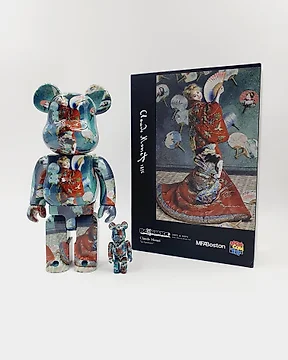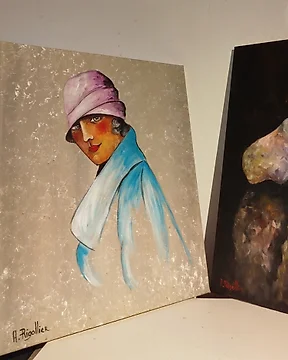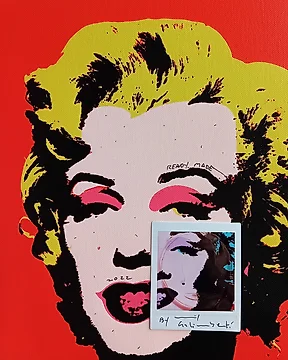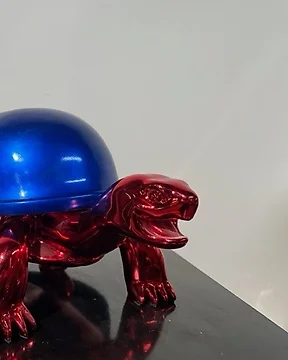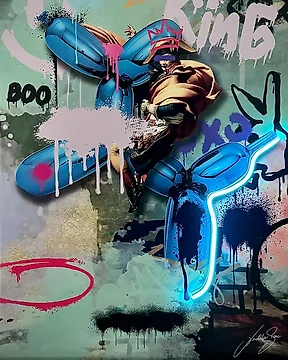Modern & Contemporary Art
4656 objects
Questions? our Modern & Contemporary Art expert got answers
The terms modern and contemporary art are often used interchangeably. However, they aren't quite the same. Modern art preceded contemporary art. Generally, most art historians and critics state that the modern art period started around the 1860s and ended in the 1970s.
Many art historians and critics agree that Édouard Manet's groundbreaking painting from 1863, Le Dejeuner sur l'Herbe (Luncheon on the Grass), was the first piece to showcase the modern style.
Unlike the works of art that came before it, the piece didn't adhere to traditional rules. It was an unorthodox art piece that played with perspectives and reality, shocking purists to the core! This laid the foundation for the next generation of modern artists who broke free from classical conventions and ushered in a new era of art, including styles like Cubism, Impressionism, and Surrealism.
Contemporary art emerged around the 1970s and is the term used to describe present-day art. Unlike modern art, which primarily relies on traditional mediums like sculpture, painting, and drawing, contemporary art encompasses various media like digital imagery and performance art.
Generally, contemporary art pieces focus on the underlying concept of the work rather than aesthetics, and they often revolve around present-day issues such as climate change, gender equality, and racism, to name a few.
Most modern art historians and critics state that the modern art era began in the 1860s and extended until the 1970s. Modern art usually denotes art pieces that break free from the conventional norms of traditional art in favor of experimentation.
Unlike the artists that preceded them, modern artists abandoned tradition and explored different techniques, such as using unusual perspectives. Another common feature of modern art was the departure from narrative to abstraction.
On the other hand, while critics generally agree on the start and end date of the modern art era, the origins of the contemporary art movement are slightly contentious.
Some art historians say that the movement emerged post-World War II and gained popularity in the 1960s and 1970s. Meanwhile, other art historians say that the movement started in the 1960s with the inception of pop art. This artistic movement represented a significant break away from modern art with influences from popular culture and the mass media.
However, some art galleries and museums classify all works created after 1945 as contemporary art, regardless of their style, medium, or date created.
Unlike modern art, which tends to be media-specific, contemporary art isn't media-specific, as contemporary artists use a variety of media to convey their messages. Often, contemporary artists focus on present-day issues, such as globalization, technology, and identity politics.
The modern or modernist art movement has had many prominent artists since its inception in the 1860s. Pablo Picasso is undoubtedly the most famous artist from the modern art era. Alongside Georges Braque, Picasso pioneered the Cubist art movement — a groundbreaking technique that challenged conventional art techniques and inspired numerous future works.
Claude Monet is another famous artist from the Modernist era. A pioneer of the Impressionist style, Monet's works used vibrant colors and expressive brushstrokes to showcase the natural world and 19th-century urban Paris.
Besides Monet, Vincent Van Gogh is another prominent artist who influenced the Impressionist movement. Although unappreciated during most of his lifetime, his works began to garner critical acclaim toward the end of his life, and his pieces influenced many other subsequent modernist works.
Away from the modern art movement, some famous contemporary artists include Jeff Koons and Yayoi Kusama.
Renowned for his works featuring vivid colors and pop culture references, Koons challenged conventional notions of art by creating pieces using everyday objects like stainless steel, wood, and even Play-Doh!
Dubbed the ''princess of polka dots,'' Yayoi Kusama produces various art pieces such as sculptures, paintings, and installations with mesmerizing dots.
Besides these artists, some other famous contemporary artists include Damien Hirst, Cindy Sherman, Richard Prince, Takashi Murakami and Banksy.
The terms modern and contemporary art are often used interchangeably. However, while both words refer to something current or new, they aren't the same in the art world.
First, modern and contemporary art emerged during different periods. This is undoubtedly the easiest way to distinguish the two art forms.
Modern art comprises works created from the 1860s to the 1970s, and it includes a variety of artistic movements like Cubism, Fauvism, Surrealism, Impressionism, and Post-Impressionism. In contrast, contemporary art emerged in the late 1960s or early 1970s, according to art historians.
Secondly, modern art primarily aimed to challenge the conventional notions of art by exploring topics such as inner thoughts and emotions rather than solely focusing on aesthetics. In contrast, contemporary art often focuses on themes affecting present-day society, like climate change, technology, and identity.
Third, modern art primarily employed traditional mediums like painting, drawing, and sculpting. In contrast, contemporary art often uses traditional mediums alongside others, like digital imagery, installation, and performance.
Finally, many artists from the modern art era ascribed to particular styles or movements like Cubism, Surrealism, and Impressionism. For instance, Picasso and Braque were known for influencing the Cubism movement, while Van Gogh and Monet were known for the Impressionist style. In contrast, contemporary artists don't adhere to particular styles. They tend to be fluid, drawing inspiration from pertinent subjects.
If you want to invest in art, both modern and contemporary pieces are excellent options.
